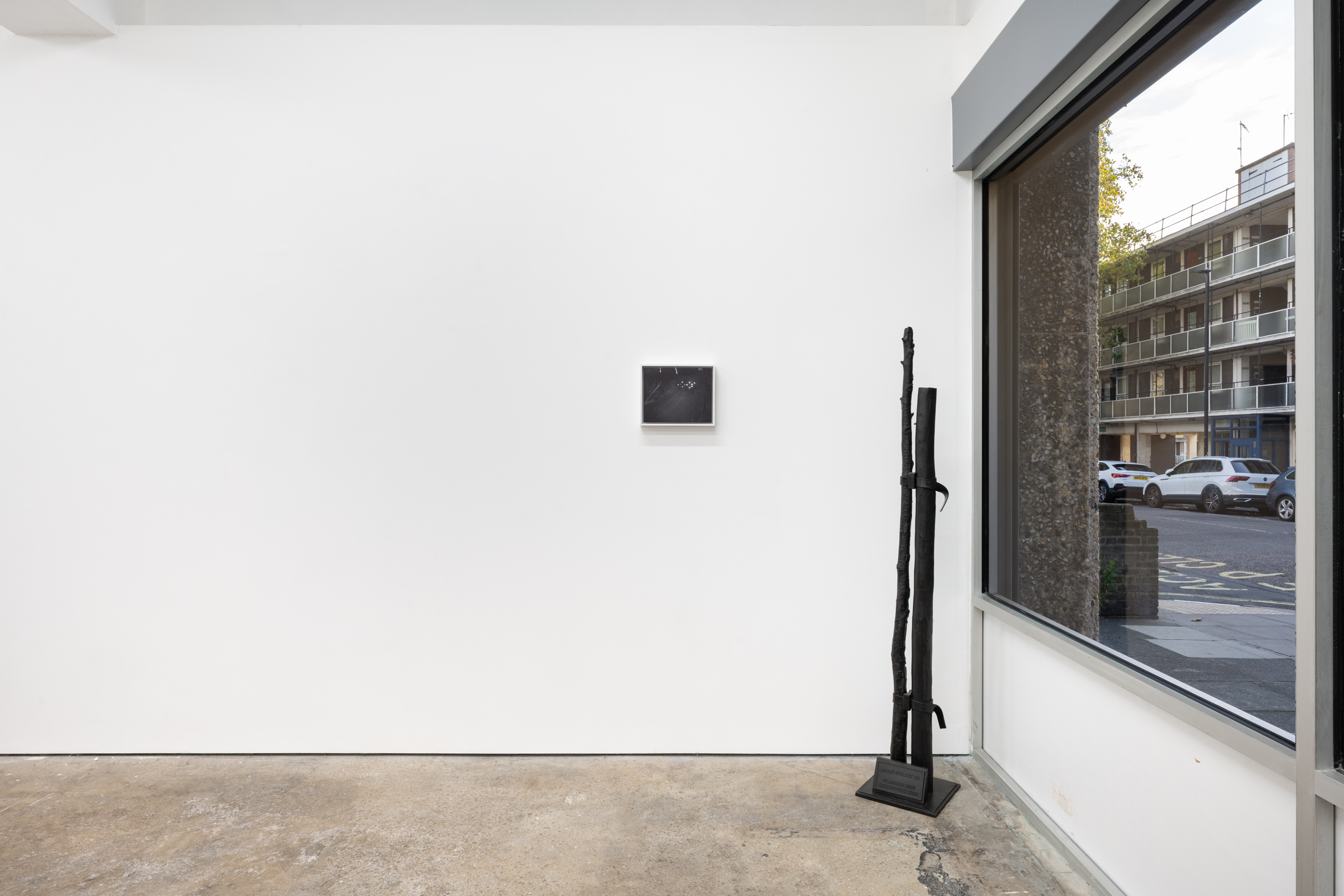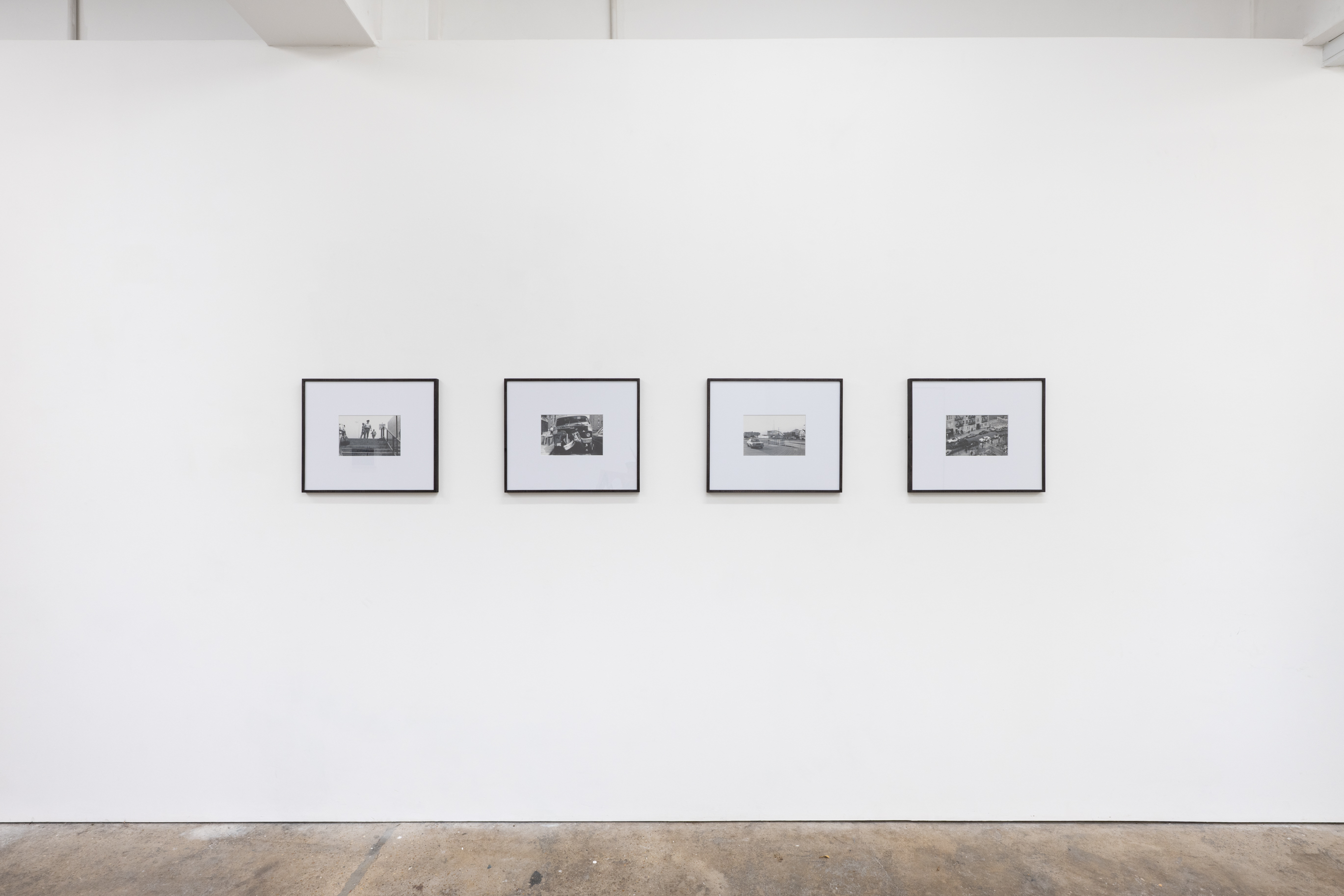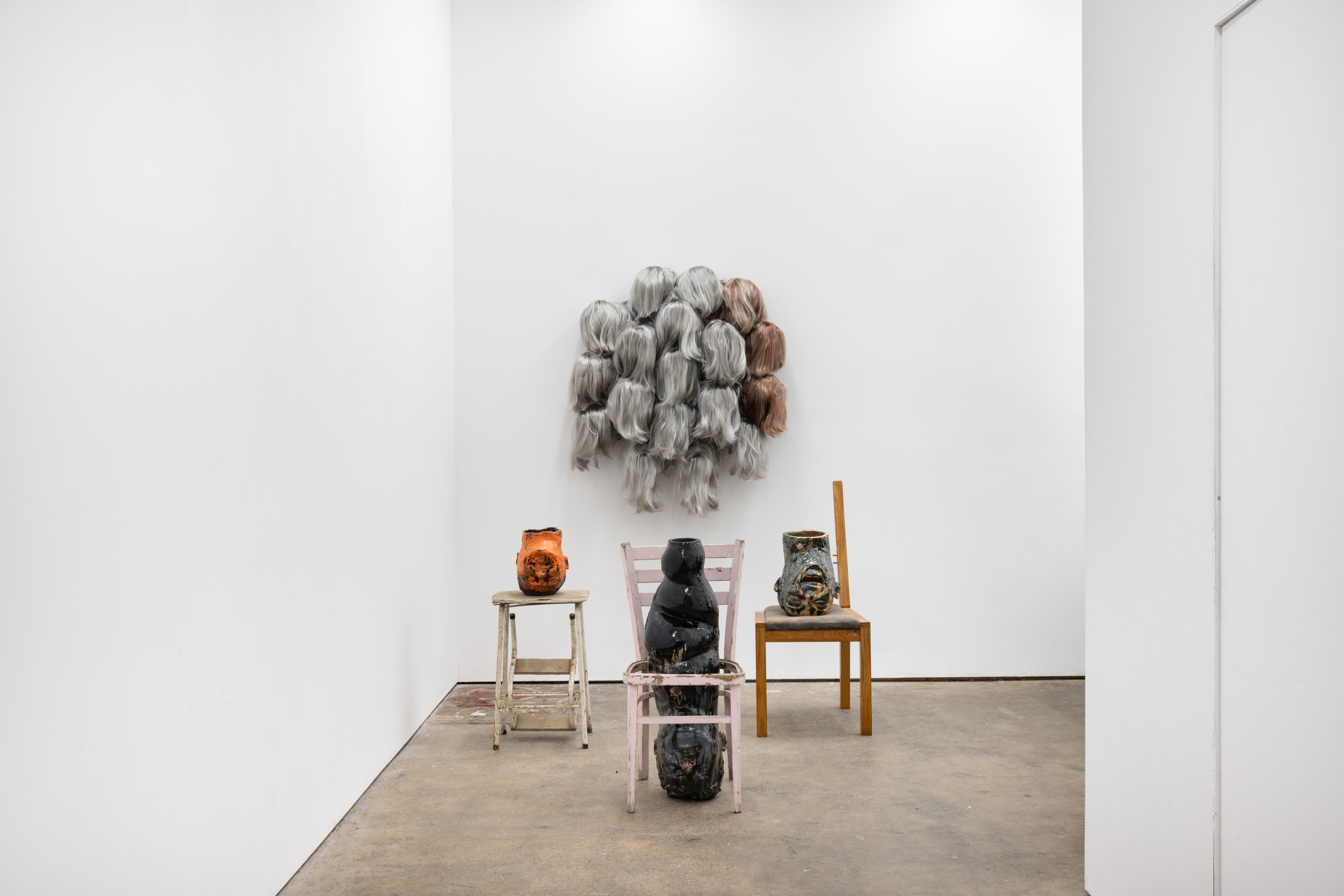Simon Bedwell
Keith Coventry
Cameron Patricia Downey
Irene Fenara
Richard Kern
Bill Woodrow
Curated by Darren Flook
25 October - 14 December 2025
PV: 25 October 2025 | 6-9 pm
96 Robert St., NW1 3QP, London, UK
For enquiries contact: contact.season4episode6@gmail.com





Curator’s Text
Happy Now is an exhibition that considers works that look at, and find pleasure in, subjects that are not normally associated with positive feelings. Burnt out cars, far right politicians, disused scrap, surveillance cameras and low-cost products are all transformed by the artists into objects and images of possible desire.
The starting point of the exhibition was a set of photographs by the American photographer Richard Kern (b. 1954, USA) of crashed and abandoned cars and policemen loitering around the streets of the Lower East Side of New York in 1980. Kern is now famous for his transgressive 16mm films and music videos for the likes of Sonic Youth in the 1980s and for his ongoing work with sexual imagery, but these photographs – which have never been exhibited before in the UK – predate that work. They document, in black and white, a city in the midst of crime and poverty, but to our contemporary eyes, there is an unintended glamour to the images. Countless films and TV shows set in New York in the 1970s and early 80s have altered our reading of the images of this period, a Hollywood filter now overlays the photographs. Crashed cars and cops are now more likely to evoke to The French Connection than documentary reportage.
The disconnection between what is presented and how it is read when it comes to negative ingredients became a starting point for thinking about positive emotions from apparently low materials. The title Happy Now is taken from The Jesus and Mary Chains’ 1987 song ‘Happy When It Rains’, the repeated chorus of which runs “And I’m happy when it rains, And I’m happy now”. Pleasure, or happiness, from the negative is not an unusual topic for a band hoping to sell records.
Simon Bedwell (b. 1963) is a London based artist who was previously co-founder of the art group BANK in the 1990s. BANK, were a hugely energetic and provocative art collaboration, making art, staging group shows that included themselves and friends, running a space and producing a satirical newspaper all of which have now entered an almost legendary place in the alternative history of the British art world. Bedwell has since gone to have an individual career that has included solo exhibitions at the influential White Columns in New York and Studio Voltaire in London. This exhibition focus’ on Bedwell’s latest works, ceramic heads of controversial British politicians currently active. Bedwell taught himself ceramics and glazing, but any sense that the rebellious Bedwell might slip into middle comfort as a part time potter, have been dispelled by his choice of subject. The glazes though, are beautifully done and one can’t help but find the sculptures beautiful despite their repulsive subject matter. Bedwell’s Farage ceramics are close in character to British satirical cartoons of the 18th Century, close to Hogarth in spirit and still in the vain of the abrasive stance that made BANK so compelling.
Keith Coventry (b. 1958) is a London-based artist who has since the 90s been creating paintings and sculptures that fuse the dreams of Modernism with the harsh realities of contemporary urban life. Coventry’s paintings of the architect's plans of housing estates, rendered from above, appear like the work of early 20th Century Suprematists like Malevich. The high hopes of the paintings’ appearance are brought down by their titles: each named after what newspapers would term a ‘trouble estate,’ highlighted for their criminal activity. In Happy Now Coventry presents a bronze cast of a snapped tree. The trees, held in place by wooden staves, are a common sight in the public zones of British towns. What is also a common sight is the tree being snapped off at the point where the staff ends. Vandalised aspirations of gentrification cut short and re-presented as sculpture.
Cameron Paricia Downey (b. 1998) is an American artist who uses sculpture, photography, installation, performance and curation in an ongoing exploration of rhythm, repetition, music and the transformation of found materials. The multiple wigs presented in Happy Now are part of a series of works that have also been shown at T293 gallery in Rome in a solo exhibition earlier this year. For that exhibition, titled Hoard Ecstatic, Downey stated that she was interested in what happens to objects once they are freed from their role to serve. The wigs here evoke headless bodies and crowds without a physical form, both a mass and a singular, like petals creating a single flower or the individual members of a band creating a single sound.
Irene Fenara (b. 1990) is an acclaimed artist based in Bologna, Italy, using mainly photography and video. Fenara’s work concentrates on the act of watching, central to photography – yet in the work of Fenara, it is taken to a mechanised, troubling conclusion. The artist accesses video surveillance cameras to make her work, using the millions of images taken every day by devices introduced for protection, security and control. The images they take are often highly flawed – the cameras are dirty, obscured and confused by what they observe.
Bill Woodrow (b. 1948) is a British sculptor who became internationally famous for a body of work in the 1980s that was revolutionary and inspirational to a whole generation of artists who saw in his transformation of cheap materials into powerful aesthetic and political tools a way of making art that was vital in the recession of the early 80s UK. Woodrow used materials that were familiar: discarded domestic items collected from the streets and junk yards in his neighbourhood, which he then cut, bent, and folded to create works that both critiqued and were part of Western consumerism. The work in Happy Now is the large scale Cello/Chicken from 1983, which was last exhibited in Kiev in 1990, which was then part of the USSR. Thirty-five years since the sculpture was last exhibited, the world and British art scene that it came from in the early 80s has changed an incredible amount, but this work resonates, commands and inspires in our current economic and politically challenging times.
Darren Flook is a curator based in London.